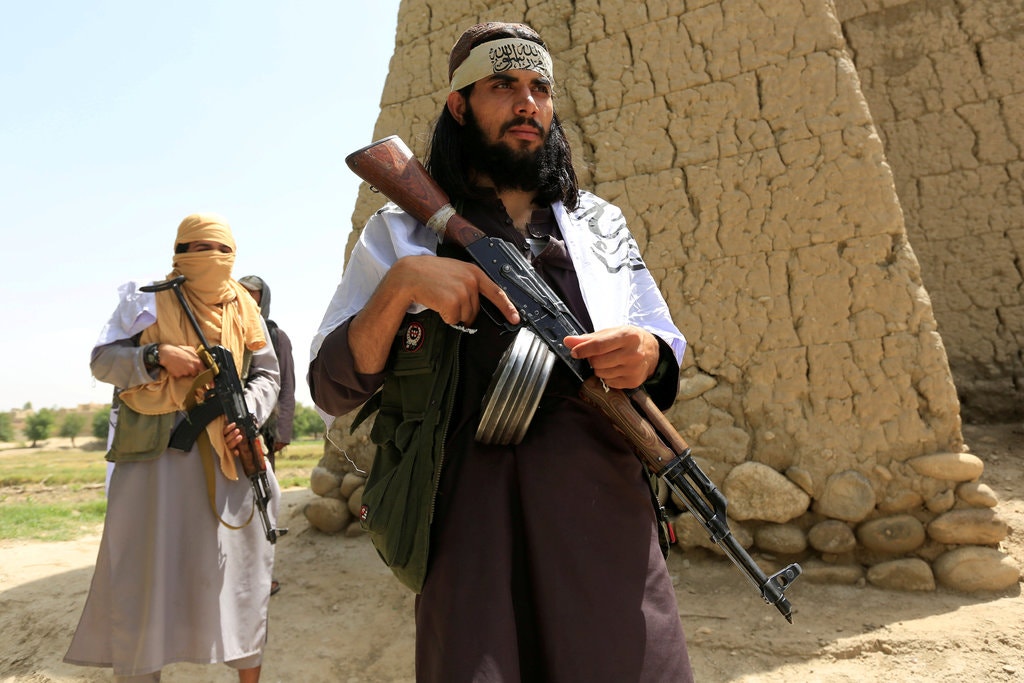
Image Credit: Parwiz Parwiz/Reuters
Dylan Winsick, contributing
Kabul, Afghanistan – The International community recently witnessed a landmark peace deal between the United States and the Taliban. The Taliban has been a major threat to not only the Afghan government but also to the United States. The Current Affairs Times covered this topic in two parts. Part One breaks down the origin and impact of the Taliban.
Origin of the Taliban
The Taliban meaning “students,” in the Pashto language, emerged as a group to restore peace, power, and security in Afghanistan in 1990. This group started its first movement in northern Pakistan immediately after Russia withdrew its troops from Afghanistan. This sect of the Taliban used seminars as a means to preach about Sunni Islamic rules.
The Taliban eventually enforced its versions of Sharia Islamic law while gaining power. Between 1995 and 1998, as part of their caliphate, the Taliban captured the majority of Afghanistan, including the province of Herat and Kabul — overthrowing the Afghan Mujahideen. While the organization gained popularity in the beginning by attempting to wipe out corruption and lawlessness, the Taliban have been responsible for many atrocities.
The Brutality of the Taliban
The Taliban introduced the public executions of convicted felons and cited Islamic law in support of the organization’s administrative and religious procedures, including amputating body parts as a common punishment. Under their version of Islamic law, men were forced to grow beards while women were forced to fully cover their bodies with burqas. Girls over the age of ten were not allowed to go to school. Additionally, the Taliban imposed a ban on television, music, and cinema.
One of the many cultural waves of abuse under the Taliban regime was the destruction of the historic Bamiyan Buddha statues in central Afghanistan in 2001. This caused international outrage. Allegedly, most of the Afghan members of the Taliban were Pakistan Madrasa- educated. Pakistan is said to have assisted in the formation and existence of the Taliban. Pakistan has always denied this allegation.
The Taliban’s Relationship with The United States
The Taliban protected terrorists Osama Bin Laden and Al-Qaeda, supporting their September 11, 2001 attacks on U.S. soil, killing thousands. With planes crashing in New York, Washington D.C., and Shanksville, Pennsylvania; this incident triggered major terrorism combat initiatives in the United States.
The Taliban refused to hand over Osama Bin Laden, the man behind these attacks. On October 7, 2001, a U.S.-led military coalition invaded Afghanistan on land and air, collapsing the Taliban by the end of December 2001.
Unfortunately, at that time, the Taliban’s then-leader Mullah Mohammad Omar fled, evading capture. This started one of the largest manhunts in the world. The United States Former President George W. Bush started this war on a sad note claiming that “We did not ask for this mission, but we will fulfill it.”
Noted scholar, Geroge H Aldrich, identified that the U.S. arrested many soldiers belonging to both the Taliban and Al Qaeda in the course of an international armed conflict which would raise questions regarding their legal status. This question was not answered until 2020 when the prisoners were released.
In 2014, the withdrawal of the North Atlantic Treaty Organization’s (NATO) troops led to the bloodiest year in Afghanistan. Combat missions were abruptly ended, leaving the not-so-powerful Afghan government alone in its fight with the Taliban.
Why Has the Taliban Lasted?
Allegedly, the Taliban as a group make 1.5 billion dollars annually, partly through the production of drugs. Afghanistan is one of the largest producers of opium poppies, an ingredient used to produce heroin. Opium poppies are mostly grown in the areas where the Taliban has regained its influence after the withdrawal of NATO forces. In 2009, the U.S. government instituted a troop surge as one of the measures to prevent the Taliban from regaining its strength. However, the surge did not last very long.
Harvard professor and former Central Intelligence Agency (CIA) task force member, Marc Sageman, has contradictory opinions regarding the Taliban. Sageman opines that although Afghans can blame foreigners without trying to find internal political solutions to their grievances, he does not believe that “ the Taliban are strong enough to muster an offensive campaign capable of overtaking the Afghan government. It is very different to carry out local ambushes from uniting into a coalition that can carry out large scale offensive action.”
Sageman told The Current Affairs Times, that he was a part of the CIA Task Force in Pakistan and worked on the Afghanistan field projects. However, the rising violence in Afghanistan proves that the government, with its internal tribal clashes, has not been able to make much of an impact against the Taliban.
The Trump administration found it beneficial to withdraw troops — despite objections from the Afghan government — solely because of economic disadvantage. Since 2001, conflicts in Iraq, Syria, Afghanistan, and Pakistan have cost the U.S. $5.9 trillion dollars.
The Taliban has been represented by a religious Islamic scholar, Mawlawi Hibatullah Akhundzada, in talks with The United States government since 2018. These talks saw the release of Taliban prisoners. The United States anticipates withdrawing its troops from Afghanistan.
Is this truly the start of ending the years of conflict that cost thousands of lives?
Image Credit: Parwiz Parwiz/Reuters
Sources:
- “Why is there a war in Afghanistan? The short, medium, and long story”
- The Taliban, al Qaeda, and the Determination of Illegal Combatants, by George H Aldrich.
- The Current Affairs Times uses Westlaw Edge as a resource for the insight above.
Afia is a lawyer, journalist, an avid traveler, an avid reader, a foodie, and an amateur singer. She enjoys instrumental music with her glass of wine ?






